Time is both the subject and object in the works of Kerala sculptor Jigesh Kumar
Time flows through everything — organic or inorganic, sthavara or jangama. Time leaves its traces in curious and enigmatic ways on everything, ageing and dissolving the object at times, carving and sculpting its inexorable voyages inside and outside, in other times. How does one capture time, which is eternal and ever-flowing, visceral and abstract, ephemeral and historic? Is the essence and sense of time left behind in its effects and traces – for instance, in wrinkles, rings on trunks, or in the ever-repeating seasons and its cycles?
Time is both the subject and object in the works of Jigesh Kumar. In a way, Payyanur-born Jigesh’s works are ruminations on time, its passing and traces, its effects and marks. Most significantly, Jigesh uses earth as the medium and material to experience, understand and express time, and his works seem to capture its sedimentations in the world, at the interstices or junctions of time and space/object.
History and memory
Jigesh uses natural sites and organic materials to capture or congeal the flow of time, to illuminate the momentary in order to transport us into that crux of experience where time and space, material and memory crisscross. In his recent earthen work installations, Jigesh uses organic and found materials such as mud and wood, toy and swing, to create termite mound-like structures.
In their form and shape, formations and structures, the sources of inspiration for the earth-work could be the mud houses and from the shapes formed on earth after heavy rains or flood under tree trunks and other static objects left in the open: which is again a reminder of torrential flow and the residual forms it leaves behind. This also brings into memory rains and floods, from the recent past and the recesses of collective memory.
Jigesh’s installations invite the viewer to walk around them, to feel both the flow and congealment, the flux and freeze of time and space, of how nature inscribes itself onto the physical world as residues and formations, marks and scars, and how histories are enfolded and memories are woven into our surroundings and in everyday objects.
The mound rises from the earth and connects with the lowering branch of a tree as if re-establishing the inseparable link between two worlds of movement and stasis, that of the tree and the soil. A swing hanging from the branch stands still in an upward motion. Here, the material symbol or symbolic material of the swing captures the kinetics of Time and the temporality of Movement. The branch extends to a small structure where atop another mound rests a toy horse.
On the one hand, it is a playful residue from the past, a reminder of time past, and on the other, something that takes us back to the history of the site, which is also the location of the erstwhile Thangal’s horse-shed (in the installation at Kondotty as part of Sufi Festival, 2019). These made or found objects, the swing and the toy horse, are related to time: of childhood, that realm of memories and innocence, while it also evokes the abandonment of play (leela), the back and forth movement of the swing and the horse, of life, time and the world.
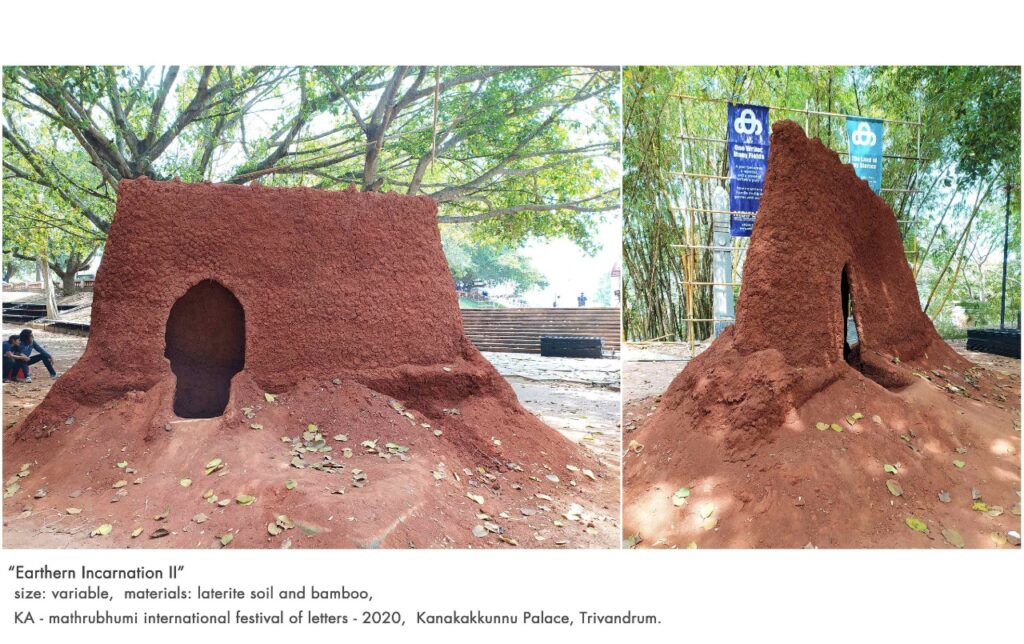
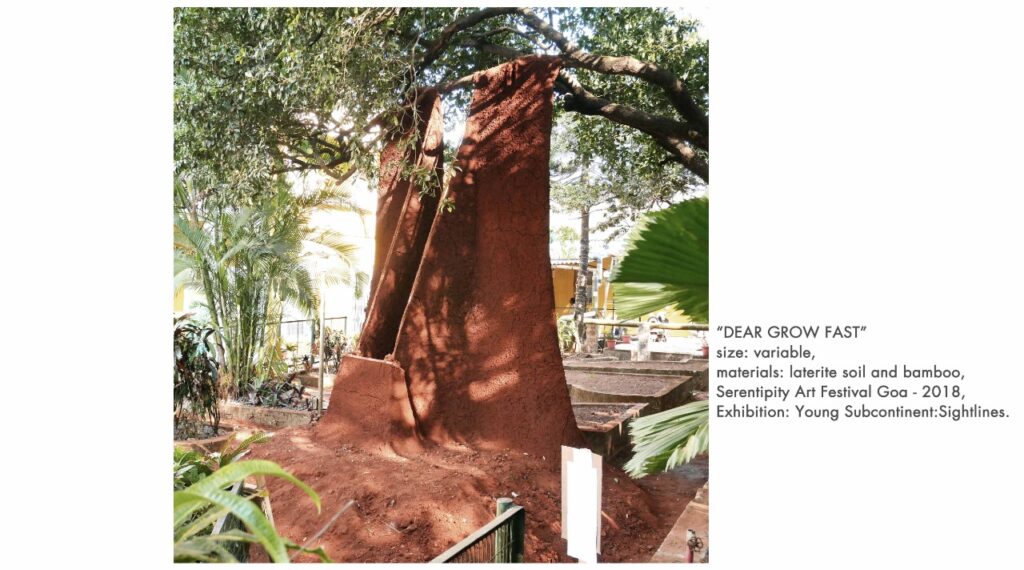

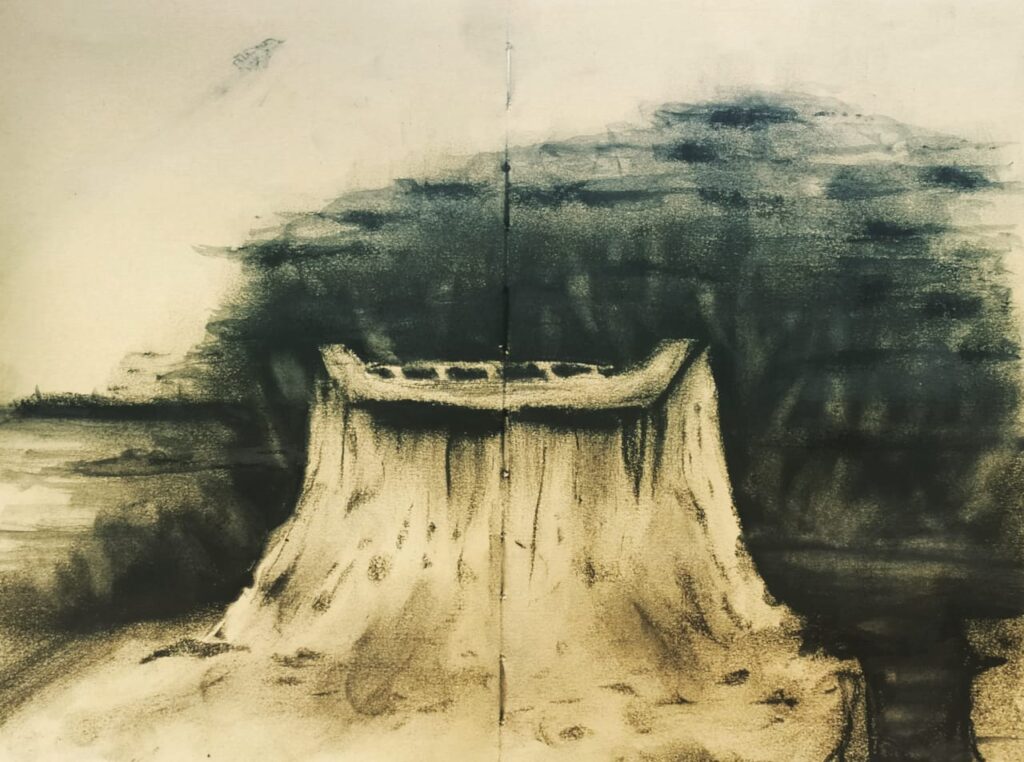
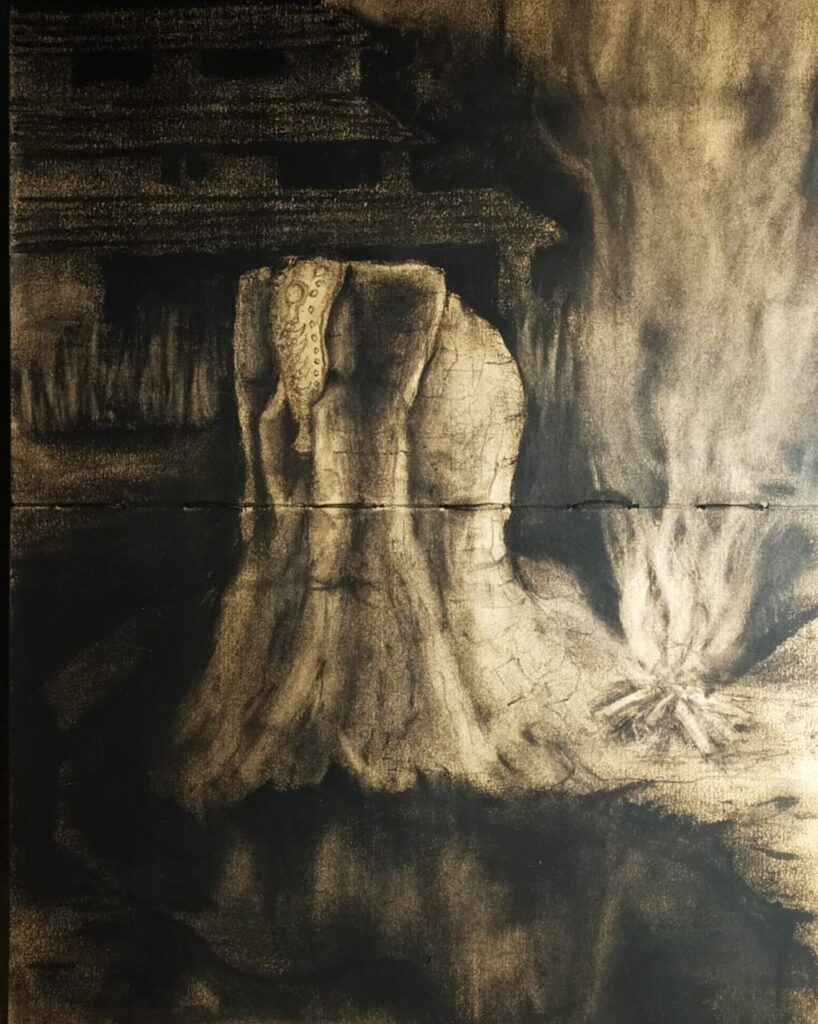
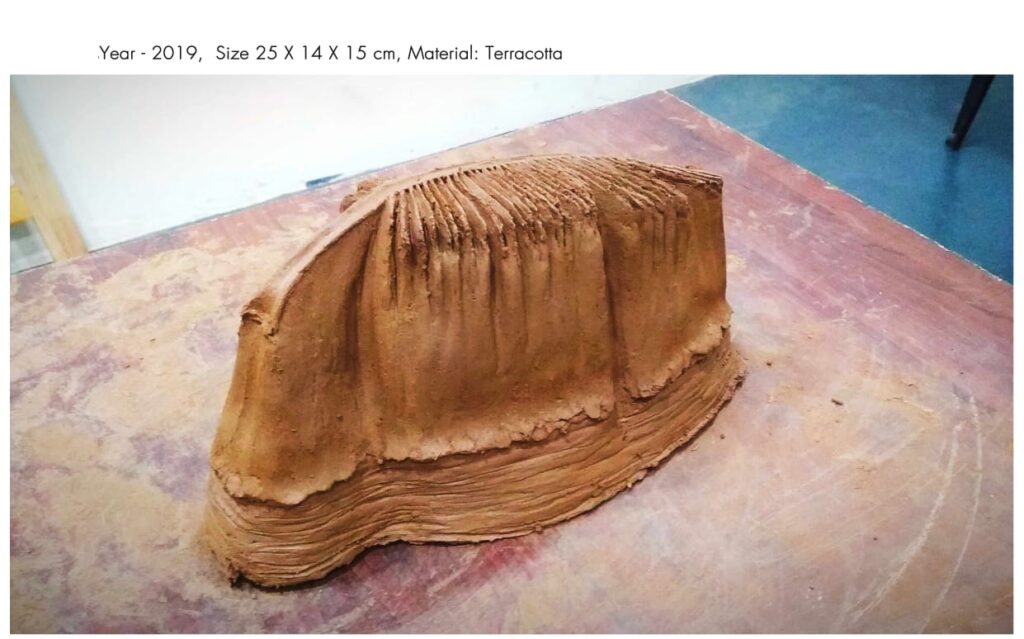
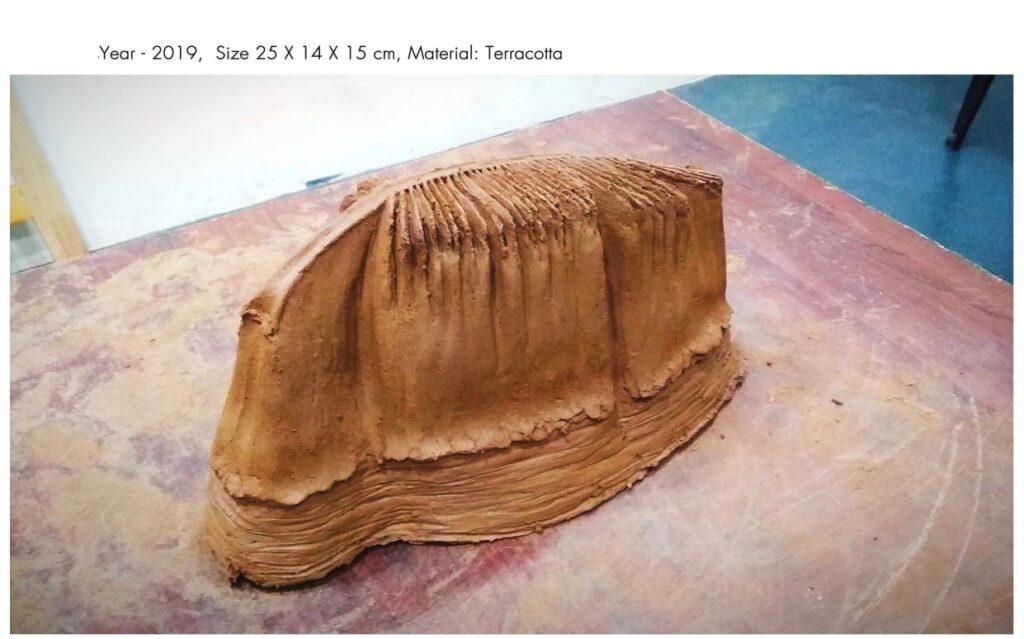

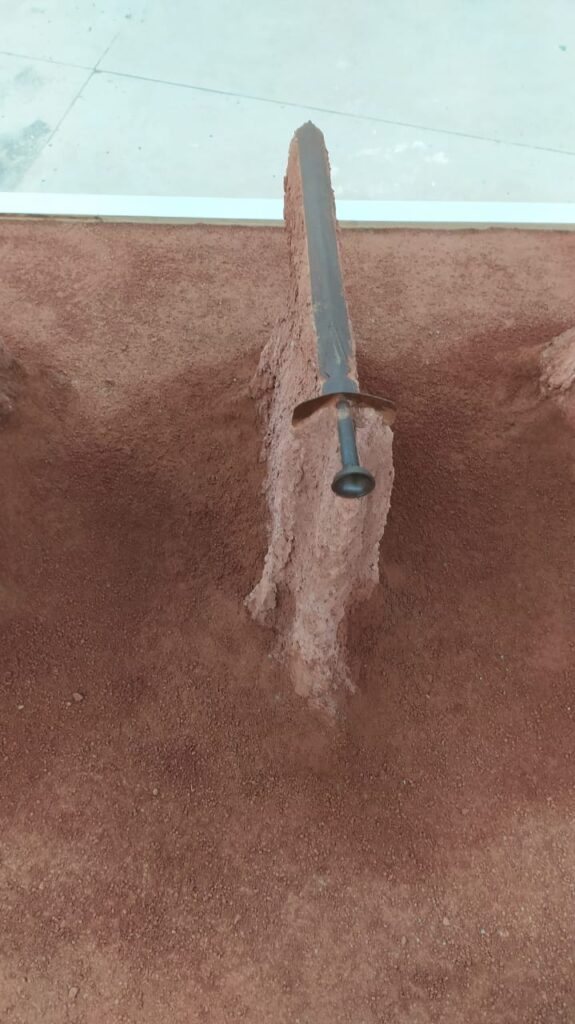

Primal spiritual energies
In the exhibits at Lokame Tharavadu installations titled ‘Remnants on Red Earth’ that forms part of the series ‘Earthen Incarnation’ – Jigesh figures the ritual swords used by Theyyam performers and oracles that seems to rise up from the earth as if clutching on to the soil beneath it, evoking memories of different kinds and temporalities of different scales – mythical, historical, religious and communal.
They evoke the primal spiritual energies of the community, the voice that speaks for them and the swords of the oracles that swirl and tremble with his ecstatic dance and prophecies. Or in their present state, as they lie on mud as if rising up from the mud and memory, they are premonitions from the past, and warnings about the present. The forebodings of both blessings and blood are unmistakable.
The artist’s note for these works mentions that the abiding theme of the works was ‘fear’, the various forms in which fear permeates our life and times, the fear that forces human beings to think up and create territories and boundaries of various kinds, and then protecting and defending them with death – one’s own or of the ‘others’.
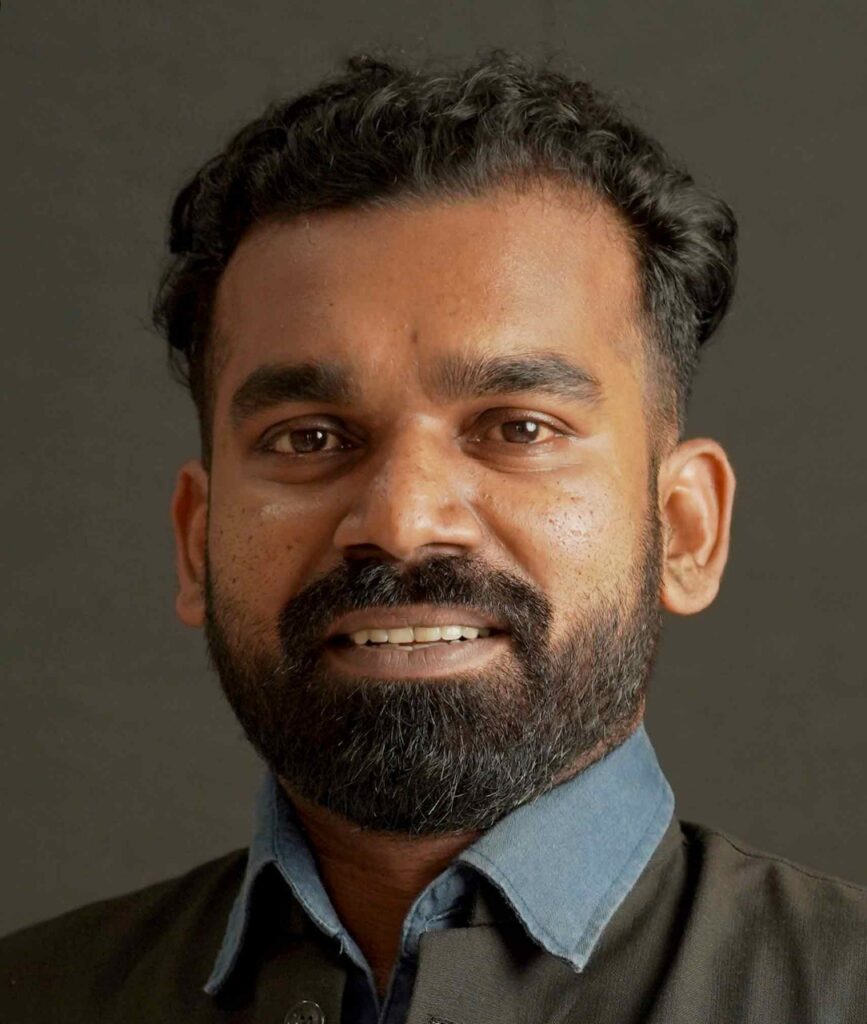
Jigesh, who hails from Kannur, a region known for Theyyams and also political violence, muses about what is it that prompts people to worship weapons, and make them an essential part of rituals and performances? He asks the question of how do we who live in the present, navigate through these ominous yet divine presences.
Process of art-making
But his works also bring in other objects into its earthen world. In another work, we see a coconut frond in the place of the sword. The frond or rather its remains, has almost disintegrated into the soil, which brings our vision to focus on the patterns that persist through the passage of time and processes of decay; it is as if the leaf has left its soul behind, a soul that refuses to leave the earth or dissolve into dust. His paintings follow the theme through images of earthen mounds and formations, in their time-worn, faded colours. They seem to rise from the depths and dust of memory, fading into or out of our vision.
The most fascinating aspect of Jigesh’s work is the very process of art-making; one that is ‘rooted’ and ‘organic’ in its very form, subject and materiality. Its ‘naturality’ is constructed and made, one that also imitates or follows the long-drawn process of nature and time even while compressing it. The viewer is immediately drawn to its form, gradually working its way through personal memories to sociopolitical histories: memories that persist through our lives, and histories whose wounds never heal and keep rising up from the soil under our feet.

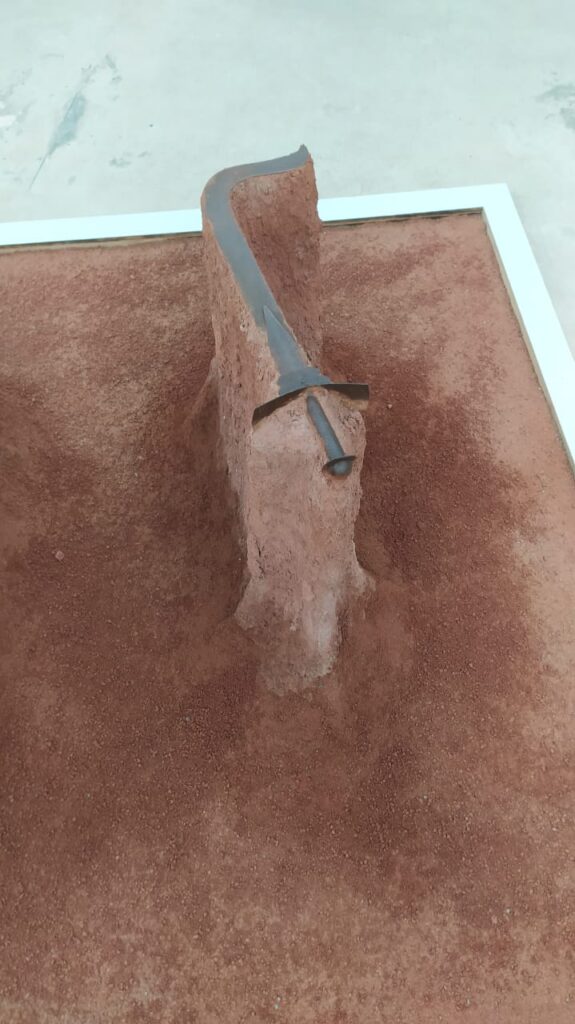
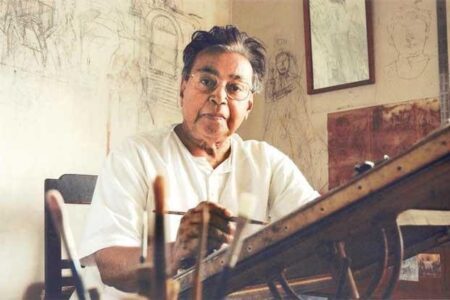

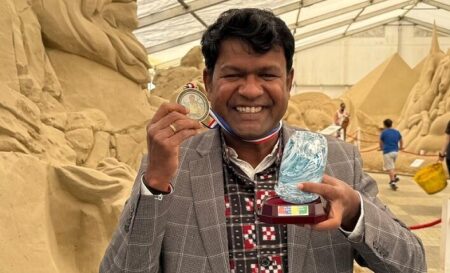
1 Comment
Best ivent